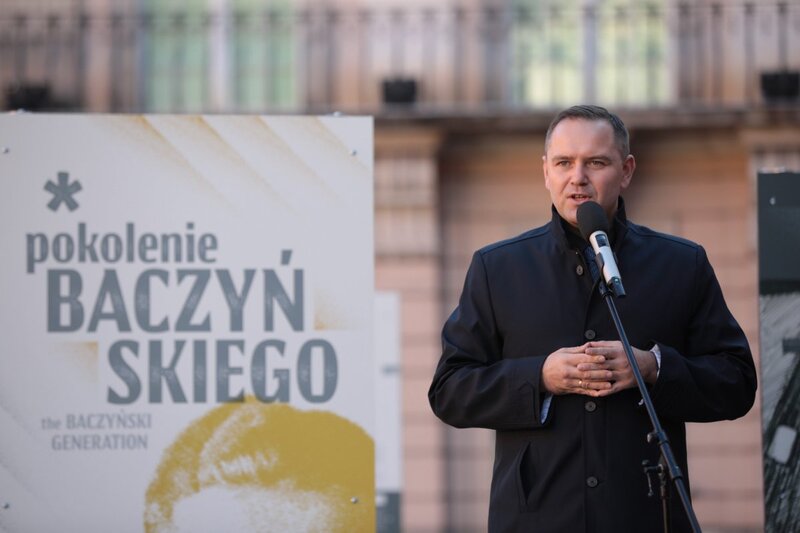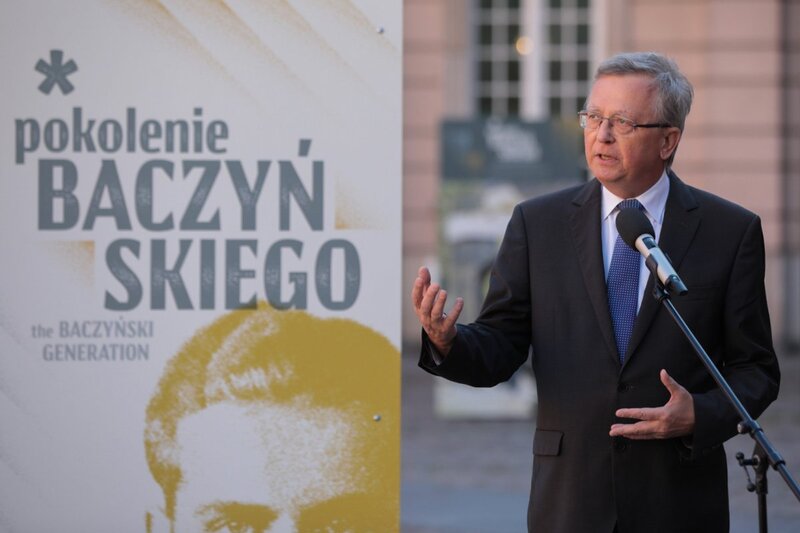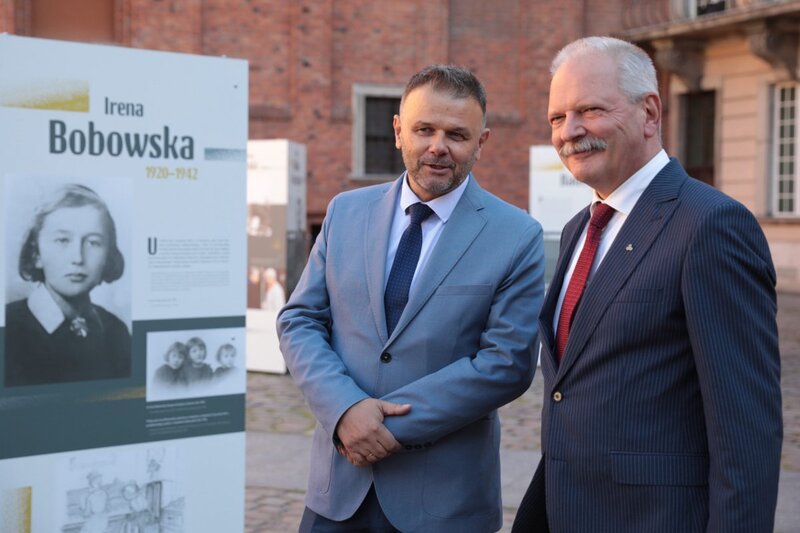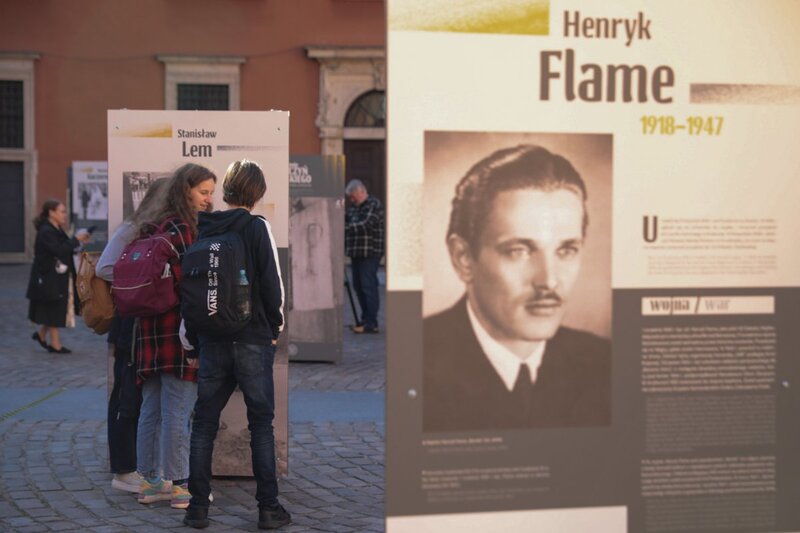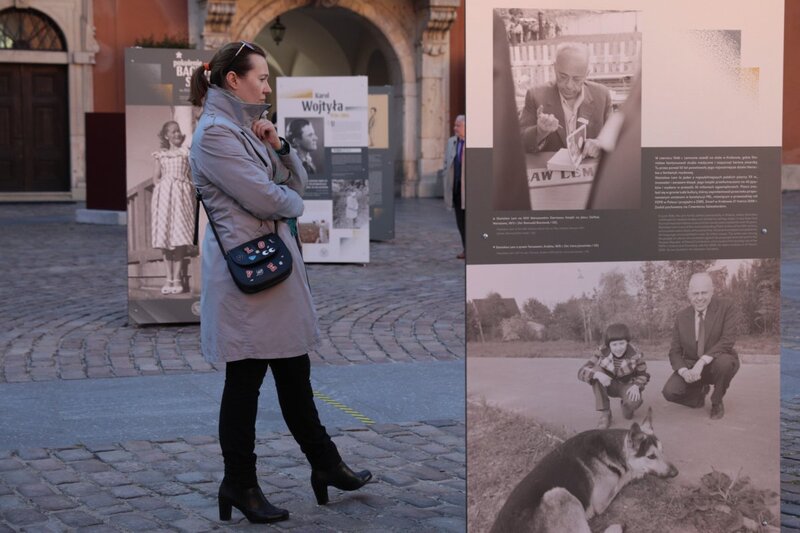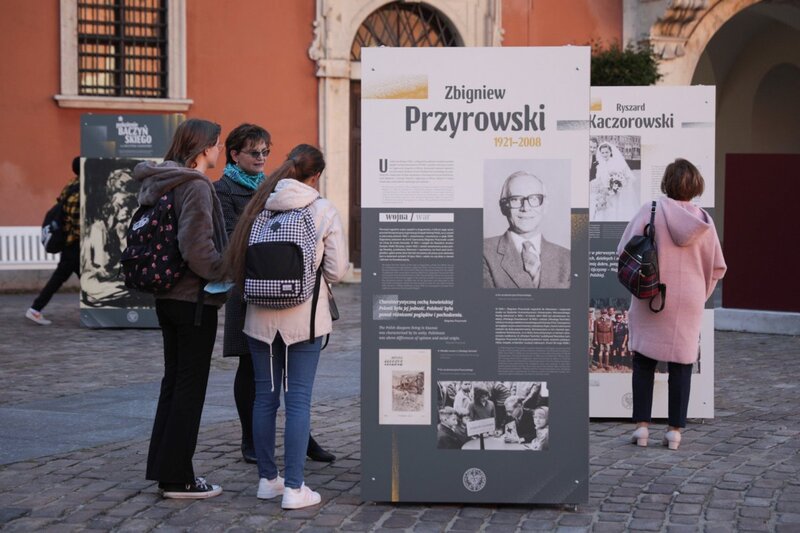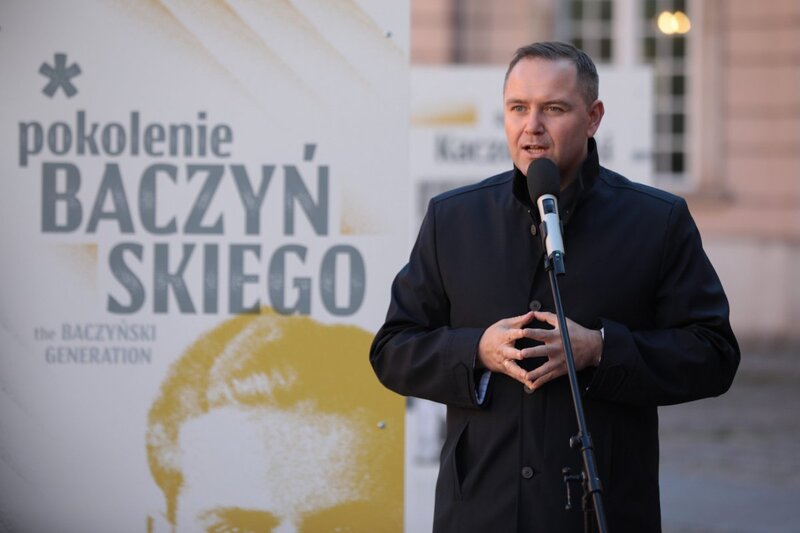Opening the exhibit, Karol Nawrocki said,
That generation was fond of poetry but not consumed by it because the same people who penned beautiful verse were the bravest soldiers, and some of them paid the ultimate price for it - take, for instance, this exhibition’s eponymous hero Krzysztof Kamil Baczyński or Tadeusz Gajcy. Others, like saint Polish Pope John Paul II or Stanisław Lem, embodied the Polish spirit and represented the proud nation and its freedom-embedded genome.
The IPN head added,
Looking at this exhibit, let us see the Second Polish Republic in the light of the most beautiful thing it created: a whole generation of Poles who refused to accept the 1939 enslavement of their country, and would resist the 1945 one. These men and women testify to that Republic’s success, which communist and German crimes tried to obliterate and push into oblivion. Yet, in free and independent Poland, these men and women tell us who we are as Poles, showing that freedom and independence is something we’ll never give up.
"The Baczyński Generation" was prepared by the Institute’s National Education Office in cooperation with branch offices in Białystok, Gdańsk, Katowice, Kraków, Lublin, Łódź, Poznań, Rzeszów, Szczecin, Warsaw and Wrocław, as well as the sub-branches in Bydgoszcz and Kielce.
The national version was authored by Adam Hlebowicz and Paweł Rokicki, and the authors of the regional versions were Marcin Chorązki, Zenon Fajger, Katarzyna Hudzicka-Chochorowska, Sebastian Kaniewski, Piotr Klimczak, Izabella Kopczyńska, Edyta Krężołek, Marzena Kumosińska, Adam Kurus, Marcin Łaszczyński, Jacek Magdoń, Agnieszka Masłowska, Paweł Naleźniak, Katarzyna Osowska, Jerzy Rudnicki, Mirosław Sprenger, Katarzyna Syska, Roksana Szczęch, Jarosław Wasilewski and Radosław Wnorowski.
Graphic design and composition by Szymon Węglowski.
Project manager: Mateusz Marek
The Baczyński Generation
Each of us has such once-in-a-lifetime experience when we wonder what we will leave behind - will it be children, grandchildren, property, professional achievements? Which part of our legacy will survive a hundred years?
This year, Krzysztof Kamil Baczyński, Polish poet and soldier of the Home Army, would celebrate his 100th birthday. In 1939, most of his peers took their high-school leaving exams. His plans and dreams for adult life fell apart when World War II broke out. That generation also included Karol Wojtyła, future Pope John Paul II, and Ryszard Kaczorowski, the last president of the Second Polish Republic in exile. Among their peers was Gustaw Herling Grudziński, Polish writer and soldier fighting in the Battle of Monte Cassino, who also penned "A World Apart", memoirs from Arkhangelsk Gulag camp. Anna Smoleńska, the Grey Regiments member who co-authored one of the most recognisable Polish symbols, the 'Fighting Poland' anchor, was born in the same year as Karol Wojtyła, and was just three months older than future Pope John Paul II.
The Baczyński generation included well-known figures but also many forgotten heroes. They are all symbolically commemorated in this exhibition prepared by IPN’s National Education Office. Some people believe that it was a lost generation. A number of its representatives died in battle, and those who survived had their lives irrevocably marked by the war. However, their lives can inspire many contemporary Poles.
They were the first generation brought up in reborn, independent Poland. They grew up in the spirit of service to their fellow citizens and to their country. Their life choices fit the definition of ‘sacrifice’. After the war, they upheld and lived by the values they had grown up in, becoming spiritual guides, doctors, teachers, scientists... It was them who, in 1980, together with younger generations, once again manned the barricades to fight for freedom and solidarity.
What can we learn from their biographies? Every day of our lives we must remember about our fellow man, who may need help. What we want is not always what we need, and it is priceless and timeless when we work for other people's good. Roots, tradition and family ties are important, despite the fact that today’s world turns its back on these values. The Baczyński, Wojtyła, Dziewulska, Pleśnierowicz and their contemporaries can and should be an inspiration for the next generations.
"The Baczyński Generation" was prepared by IPN’s educational department. It consists of a general version and thirteen regional variants, prepared by the branches and sub-branches of the Institute of National Remembrance across the country. Its inaugural presentation will be displayed at the Grand Courtyard of the Royal Castle in Warsaw from 27 September to 15 November 2021. Later, the thirteen regional versions will be presented in other cities in Poland, and the information about its route can be found on the www.ipn.gov.pl website.
